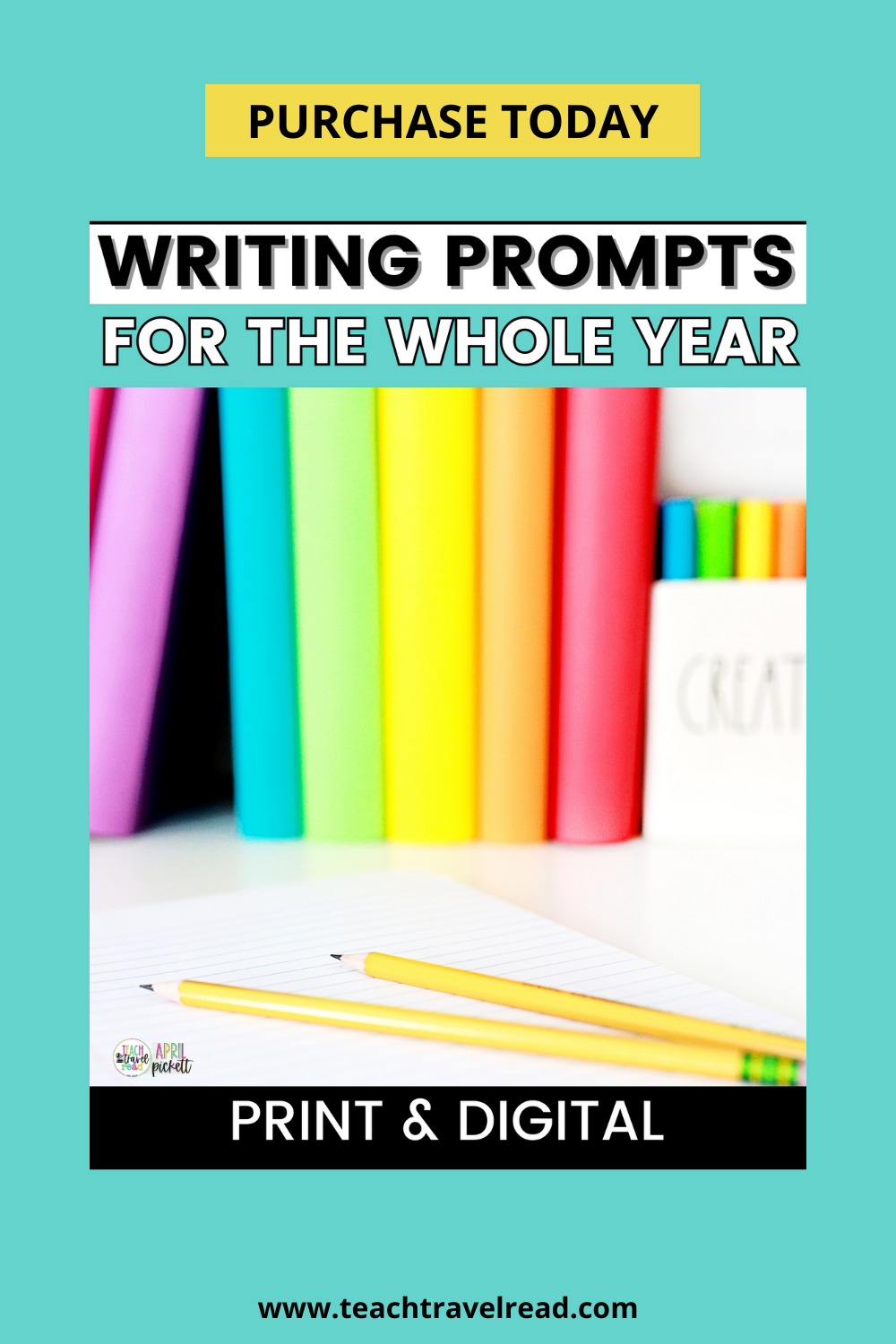The students pick up their pencils, notebooks are ready, and then there is the collective sigh.
I get it. How can teachers make writing fun and engaging for their students? Teaching 4th graders to enjoy the writing block can be like trying to get a dog to take a bath…treats required.
So, let’s talk about the struggles we face as teachers. Students are disinterested in writing, dealing with writer’s block, the need to be creative, and making writing fun.
What’s the answer? Writing prompts! These little gems can turn a dull writing lesson into a creative extravaganza.
We will journey through how to use writing prompts for 4th graders. Grab your favorite beverage, get comfy, and let’s transform those classroom sighs into cheers!

Purchase the bundle of writing prompts and save 20%.
There’s nothing worse than sitting down and drawing a blank. When we ask students to just write…here comes the tears or avoidance issues. If teachers provide a specific task or writing prompt for students, they become more engaged and can focus on creating instead of feeling defeated. Prompts are a way to kickstart the creative writing process for students.
By implementing writing prompts into daily practice, students will be able to follow a routine and know the expectations. This will also help them become more independent writers and make improvements over time.
Start the year by getting to know your students. What do they like or enjoy? Create writing prompts that appeal to those interests. They will become more invested and have more to write about when they enjoy the topic.
Are you drawing a blank? Use ChatGPT to help you create writing prompts for your students.
One of my favorite ways to save time in the classroom is by using cross-curricular units. You can use books they read aloud, class novels, and other subject areas to create writing prompts for your students.

There are a lot of benefits to starting the day with writing. The students are fresh on a new day and ready to get those creative juices flowing. One way I use writing prompts is by making it a part of the daily morning routine. When my students come into the classroom, they have a routine and one of those includes grammar, reading, and writing skills. We sometimes share our thoughts before our morning meeting.
Another way to implement writing prompts in the 4th-grade classroom is by creating a writing journal. Put the prompt on the board or print out writing prompt strips. The students can then write in a journal and make it a keepsake for the entire school year.
No longer are the days of students whining they don’t know what to write about. Give them the prompts and watch the creativity unfold. It’s not always easy, but it is a way to get them started.
Make sure writing prompts are designed to resonate with every student. Again, use ChatGPT to help you get started with ideas if needed. Also, think about the make-up of your classroom. All students deserve to feel included.

Create a writing showcase for students to show off their hard work. You can display it on a bulletin board, create digital portfolios, or have them read stories during a morning meeting.
Students love to share their work with others. Let them publish their writing in different ways. Ideas: publish a class book, or individual student book, or even turn it into creative writing projects.
Remember this is just the beginning of a thrilling writing adventure. Embrace the creativity, tackle the challenges, and witness the growth of your 4th-grade writers. Share your experiences, connect with fellow educators, and let the journey of nurturing budding authors continue. So, tell your students to grab their pencils and explore endless possibilities.
Ready to embark on this writing adventure with your 4th-grade students? Share your thoughts, experiences, or additional tips in the comments below. Let’s build a collaborative community of educators dedicated to fostering the creative potential of our young writers. Together, we’ll inspire the next generation of storytellers and communicators!
Love this teaching journey for you.